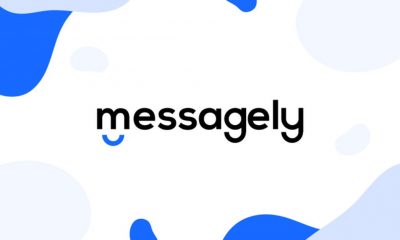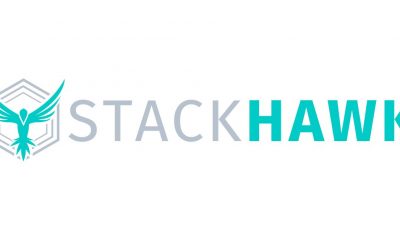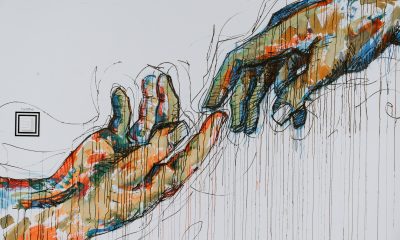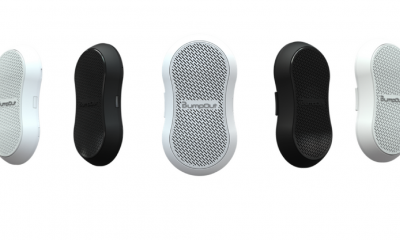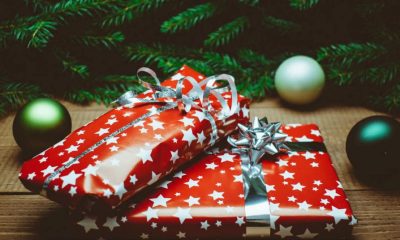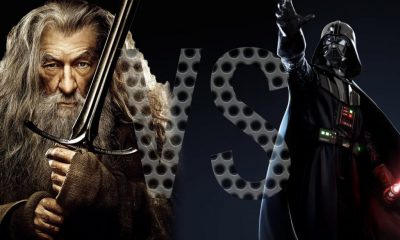Business
SpaceX’s Falcon Heavy And The Race To Space
Published
8 years agoon
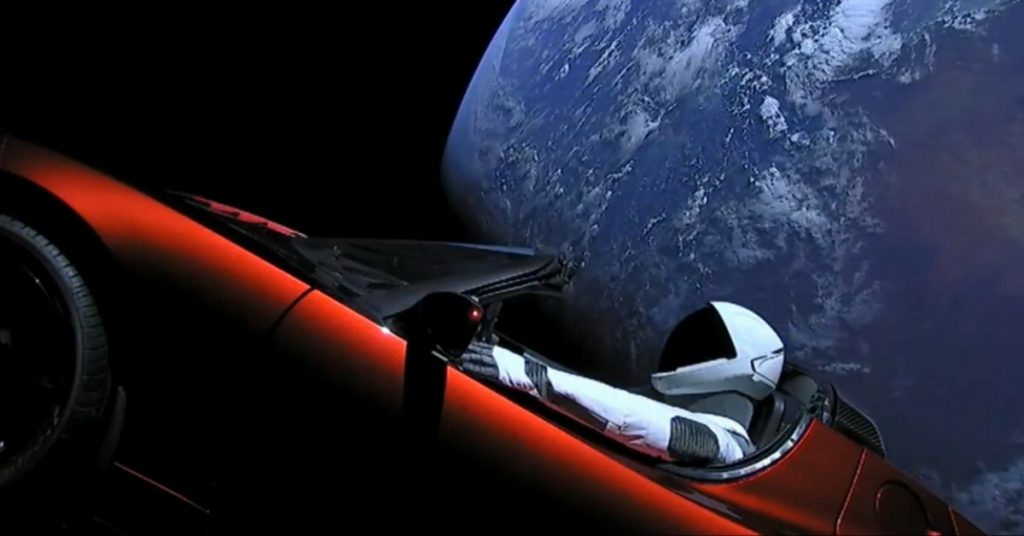
People are looking to the stars again — even though they might just be looking for Elon Musk’s midnight-cherry Tesla Roadster that’s somewhere in orbit between Mars and the asteroid belt. The successful launch of SpaceX’s Falcon Heavy rocket, which sent that car on its potentially billion-year journey, has everyone scrambling to get their rocket program on the same level as SpaceX. What does the Falcon Heavy launch mean for the future of space travel and the possibility of a new space race?
The Falcon Heavy
On Feb. 6, Elon Musk and SpaceX celebrated the maiden voyage of the Falcon Heavy. This miracle of engineering was launched successfully at 3:45 p.m. Eastern Standard Time, powered by a whopping 27 Merlin engines — nine inches each of the side booster rockets, and nine more in the center core.
The two booster rockets successfully separated and landed almost simultaneously at Landing Zones 1 and 2 back at Cape Canaveral in a mind-blowing feat of synchronization — if you haven’t had a chance to watch the replay of this landing, you should. Go ahead, we’ll wait.
The third core, which was supposed to land on the autonomous droneship Of Course I Still Love You about 300 miles off the Florida coastline, didn’t fare as well. According to the post-launch press conference, the core didn’t have enough fuel to reignite all three of its engines for its final landing burn. It hit the water at about 300 miles per hour — hard enough to take out two of the engines on the droneship.
If the cameras on Of Course I Still Love You weren’t damaged in the crash, we may be in for some spectacular crash footage in the coming weeks.
It’s not a great loss, though — Space X wasn’t planning to reuse any of the cores from the Heavy’s maiden launch. The two Falcon 9 boosters that landed successfully are Block 4 style rockets — the ones that will be used for future Heavy launches will be Block 5.
Despite the spectacular failure of the center core, the launch itself was a complete success — pretty good for something Elon Musk was expecting to explode before it even made it off the launchpad. As Musk put it, “Crazy things can come true. When I see a rocket lift off, I see a thousand things that could not work, and it’s amazing when they do.”
Now that it’s off the ground and proven its viability as a reusable heavy lift option, the Falcon Heavy is much cheaper than any other currently available options. “At $90 million per launch, it’s the cheapest heavy lift option available,” said William Ostrove, a space industry analyst. “The Delta IV Heavy, for example, typically costs $350 million to $400 million per launch.”
The Future of SpaceX
Now that his Roadster is traversing the solar system, what is next for Elon Musk and SpaceX?
In the short term, the next big milestone for SpaceX and for the Falcon Heavy specifically is to get certified by the U.S. Air Force to carry secure and government payloads. The Falcon 9 received this certification back in 2015 and has since carried several military and classified payloads into their places in orbit. The next flight for the Falcon Heavy is scheduled for June for the Air Force — and depending on its outcome, it could be the flight that qualifies the Heavy for military and government contracts.
Next year, in addition to continuing to develop the Falcon Heavy, there are two more projects on SpaceX’s plate — Crew Dragon and the BFR.
Crew Dragon is an upgraded incarnation of the currently used Dragon capsule, but instead of just hauling cargo to the International Space Station autonomously, Crew Dragon will be outfitted for carrying astronauts into orbit and beyond.
This will likely become an essential part of the space program, or at least in getting America’s astronauts to space, especially with the current administration’s plan to defund the International Space Station by 2025 and hand it over to private investors, shifting that funding toward the goal of putting humans back on the Moon.
The BFR — short for Big F*****g Rocket — is designed for use a lot closer to home, at least to start. Once completed, the BFR will be even larger than the gargantuan Falcon Heavy. A BFR with a capsule could potentially turn a 12-hour airline flight into a 30-minute hop around the globe. It could also change the way we look at travel to the Moon, Mars and other planets, as well as facilitating asteroid mining to allow us as a species to take advantage of the resources in the rest of the solar system.
Experts estimate the BFR, once it’s off the ground, could turn space into a multi-trillion-dollar industry — currently, space travel is worth about $300 billion.
The New Space Race
The U.S. hasn’t really been in a “space race” since the 1960s, when we threw everything at the wall to see what would stick. This grand idea resulted in the Apollo program, and we sent men to the Moon for the first time. During his Falcon Heavy post-launch news conference, Elon Musk set forth a challenge: “We want a new space race. Space races are exciting.”
They most certainly are — and Musk isn’t the only billionaire with his eyes turned toward the stars. Jeff Bezos, the mind behind Amazon, is also throwing his hat into the ring, as is Richard Branson of Virgin Galactic, Tory Bruno of the United Launch Alliance and the Sierra Nevada Corp.
Bezos’ entry into the space race is his company Blue Origin — he’s launched and landed his New Shepherd rocket multiple times, even before SpaceX managed a successful landing, though all his flights were suborbital. Bezos was planning on his first space tourism launches in 2017, but that fell through. Musk and Bezos regularly launch friendly barbs at one another on Twitter, but when it comes down to it, they each support the other’s endeavors.
Virgin Galactic, headed by Richard Branson, has been trying to make it into orbit for a while now, and has even started selling $250,000 tickets. Unfortunately, Virgin Galactic has hit a few roadblocks, namely the explosion of the space plane during a test flight in 2014 that killed the copilot of the flight.
The United Launch Alliance (ULA) is the mind behind NASA’s Space Launch System and the Delta IV Heavy rockets. Bruno and Musk are butting heads on Twitter, but Musk isn’t worried. He’s actually said if ULA can launch a national security mission before 2023, he’ll eat his hat — with a side of mustard.
The Sierra Nevada Corp. (SNC) is one of the most exciting entrants in this space race. Their space plane, dubbed Dream Chaser, completed its first successful suborbital test flights in 2017 and recently landed a contract with NASA for an ISS resupply mission in 2020. Musk might have some stiff competition if SNC can manage to nail this launch.
SpaceX might be the first one out of the gate, but they’re not the only game in town anymore — and that’s exactly how Elon Musk wants it. “I think it’s going to encourage other companies and countries to say, ‘Hey, if SpaceX, which is a commercial company, and it can do this and nobody paid for the Falcon Heavy, it was paid with internal funds,’ then they could do it too. So I think it’s going to encourage other countries and companies to raise their sights and say, ‘We can do bigger and better,’ which is great,” Musk said at the post-launch press conference.
The Falcon Heavy launch was history in the making, and being able to witness this launch is an amazing feeling. You can expect SpaceX to continue to push forward in their quest to find new and innovative ways to explore the solar system, but they’re not the only company we need to watch anymore — they’re just the only ones with rockets in the air. Elon Musk may have provided the spark to start this new space race, but he’ll have to come up with some amazing innovations to stay on top!
And if this launch has taught us anything, it’s that we need to keep looking at the stars — and believe crazy things can happen.
Kayla Matthews is a tech journalist and writer whose work has been featured on The Week, VICE and MakeUseOf. Read more posts by Kayla on productivitybytes.com.

You may like
Business
What’s the Best Design Agency in Austin for Businesses in 2026?
Published
17 hours agoon
December 24, 2025
Famous for its vibrant food scene, booming tech hub, and live music, Austin, Texas, also holds some of the best design agencies in the nation. For the coming year, you might want to work with the following agencies to boost your business:
Penji

Known for its unlimited graphic design services, Penji tops this list of the best agencies in Austin. Its key services include branding visuals, infographics, social media graphics, custom illustrations, UI and UX design, and more. You can send requests for more than 120 design categories, all for a flat monthly rate. And the best part is its unlimited revisions feature, allowing you to get the exact designs you need without paying extra.
Pushstart Creative

A multidisciplinary design agency, Pushstart Creative specializes in product and industrial design, user experience, research, and strategy. It has worked across various industries, most notably consumer and commercial IoT, consumer electronics, sports, and health and fitness.
Frank & Victor

Reflecting Austin’s creative spirit, Frank & Victor helps businesses resonate more deeply with their audiences. It promises to create branding and identity systems, strategic logo designs, UI/UX designs, and more, with premium quality designs and attention to detail.
Big Gorilla

With a focus on branding and identity design, web design and development, and marketing strategy, Big Gorilla is a highly recommended creative design agency for businesses in Austin. It also offers photography, video, art direction, packaging design, and a wide range of marketing and communications services.
Fahrenheit Marketing

Founded in 2008, Fahrenheit Marketing is a full-service agency that offers both creative design and marketing strategy. Proudly based in Austin, Texas, it offers web development, UX/UI design, SEO, PPC, and ecommerce services. In addition to these, they sell products from Offline Order Importer, HubSpot, Klaviyo, SharpSpring, and many others.
Business
Top 10 Video Marketing Agencies You Must Check Out in 2026
Published
6 days agoon
December 19, 2025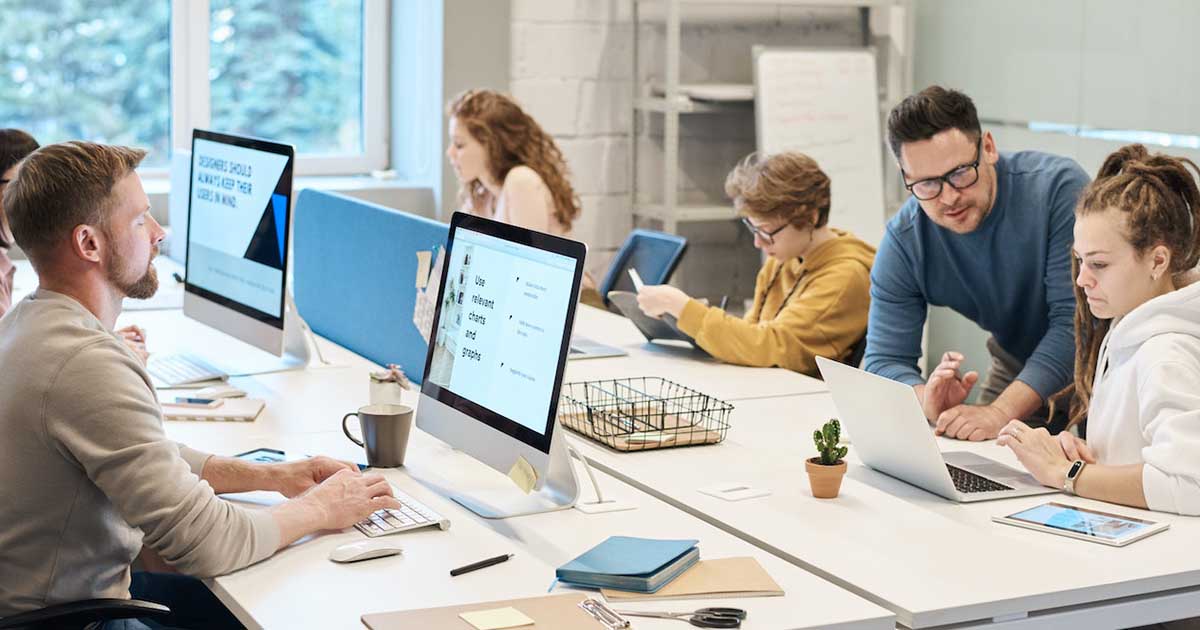
If you’ve been following the latest marketing trends, you would know that video marketing is popular. Factors like lower costs, the availability of video platforms, and the rise of social media influencers helped change how consumers interact with video content. Read on to learn the best video marketing agency to help you leverage the power of video.
1. Vireo Video
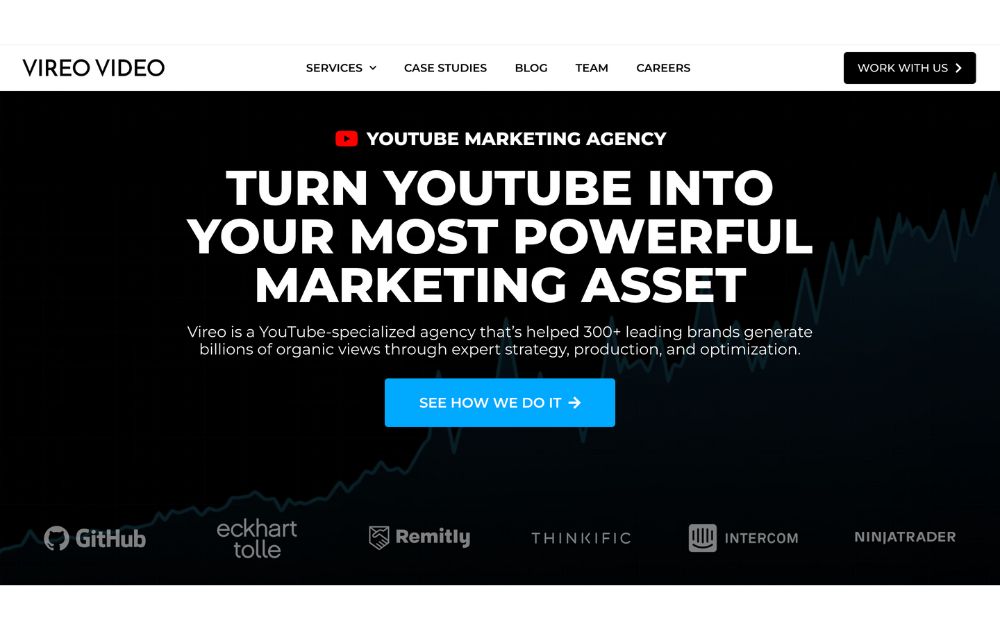
If you need an expert in Youtube marketing, be sure to check the features of Vireo Video. The platform specializes in Youtube marketing and offers various video-related services, such as Youtube content strategy, SEO, and advertising.
Vireo Video is trusted by brands and influencers like bestselling author Eckhart Tolle. Vireo assisted in the optimization of his videos and helped grow his YouTube channel. As a result, his channel has 250 million views and 1.6 million new subscribers.
Key Services:
- Influencer marketing
- Video optimization
- Targeted YouTube advertising placements
- Strategy development
2. NinjaPromo
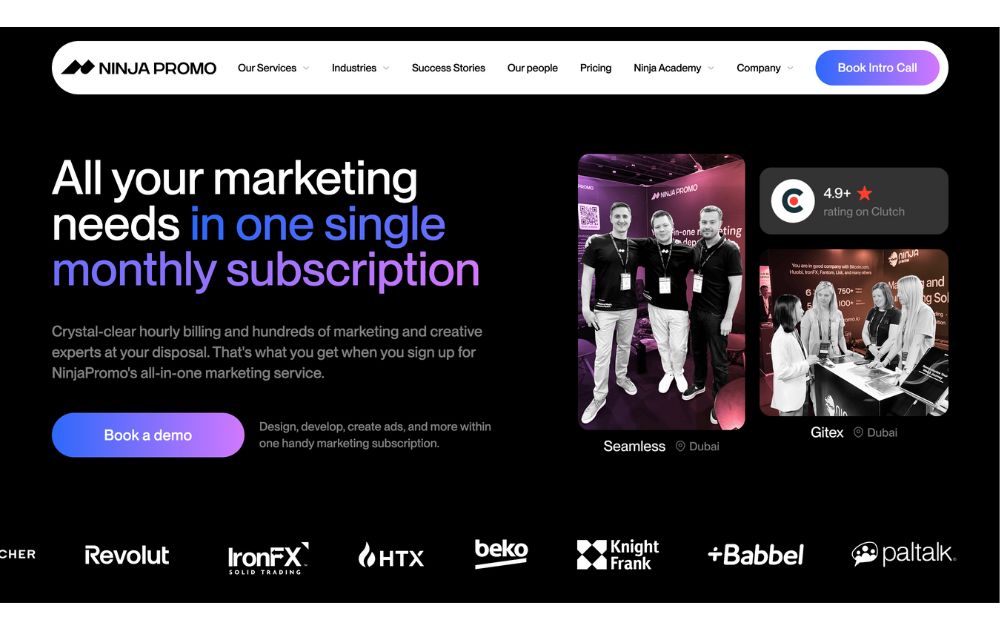
Video marketing is one of the many services offered by the digital marketing agency NinjaPromo. If you’re looking for a perfect partner to assist you in reaching your desired audience quickly, NinjaPromo is one of the best agencies to work with. The company can help you create creative, engaging, and practical videos to promote your brand and increase your online presence.
Key Services:
- Video Production
- Consultation
- SEO optimization
- Explainer videos
- Event and product videos
- Tutorials
3. Moburst
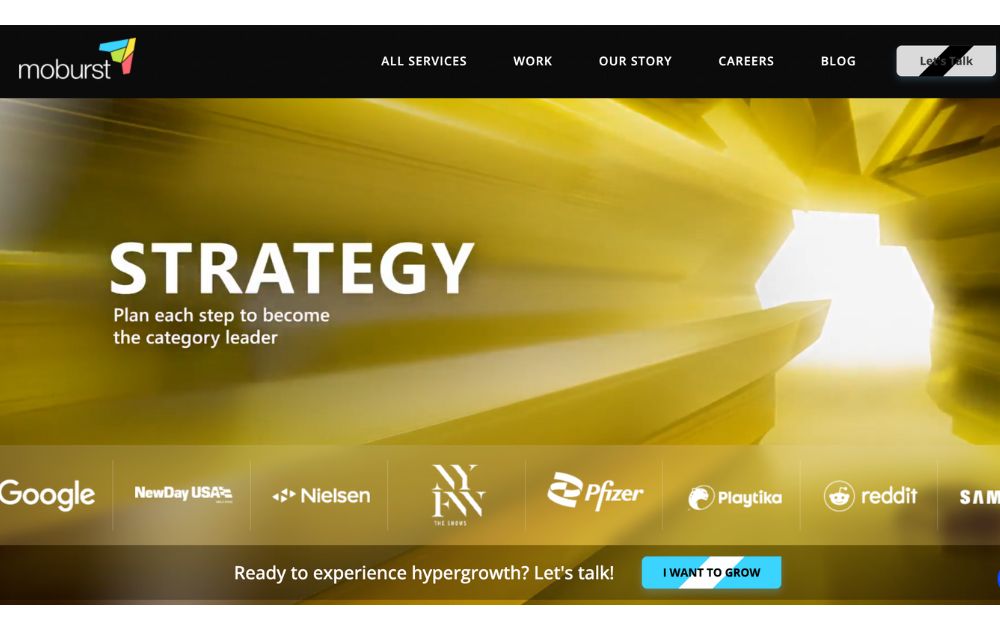
Moburst is a mobile and digital marketing agency that specializes in helping businesses grow their mobile apps. They offer different services to enable enterprises to improve their mobile app performance and increase user engagement. One of its clients is Samsung, which Moburst helped achieve +1,400% growth from downloads to social.
Key Services:
- App Store Optimization
- Video production
- Mobile User Acquisition
- Mobile App Analytics
- Mobile App Design and Development
- Mobile App Retargeting
4. Voy Media
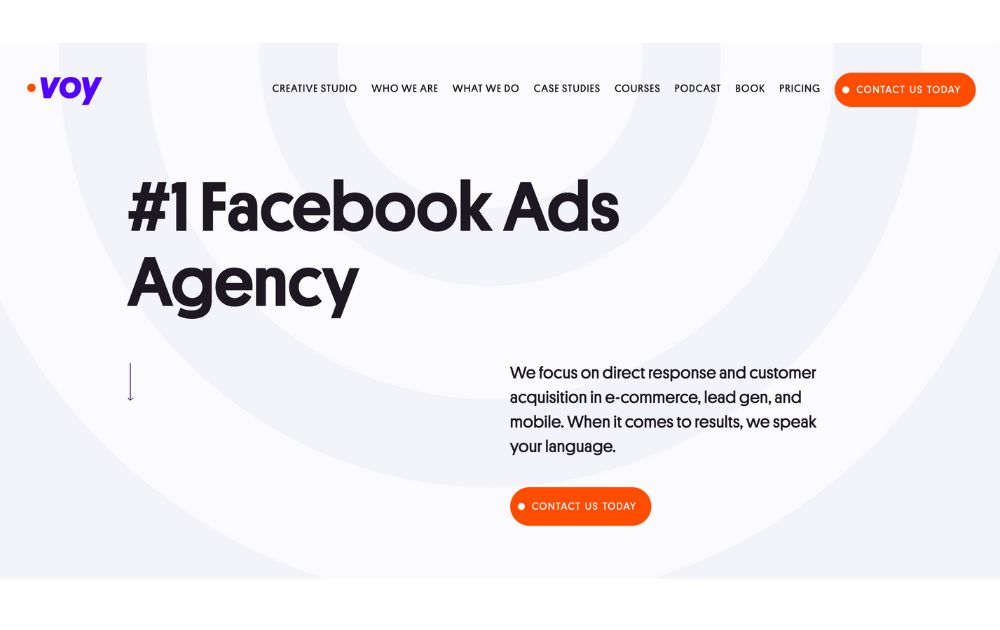
Trusted by big brands like Lacoste, Voy Media is a full-service agency offering various marketing and creative services. Their services are designed to help businesses grow their brand. Likewise, the agency helps them generate leads and increase conversions through social media platforms. Voy Media also ensures its clients receive the necessary support by assigning a dedicated account manager.
Key Services:
- Video editing and production
- Product and lifestyle photography
- Graphic design and illustration
- Full studio production with talent and script
5. Pop Video

Pop Video was established in 2010 in Houston, Texas. They describe themselves as a business-first solution for a video-first world. Pop Video has a team of visual content creators with a specialization in video production and visual content marketing.
The agency has worked with various clients across different industries, including healthcare, technology, retail, and finance. Some of its notable clients include Microsoft, Adidas, and Coca-Cola.
In addition to its core video production services, Pop Video provides consulting and training services to help businesses develop their video marketing strategies and produce their video content in-house.
Key Services:
- Video Marketing
- Video production
- Animation
- Content creation
- Social media optimization
6. Epipheo
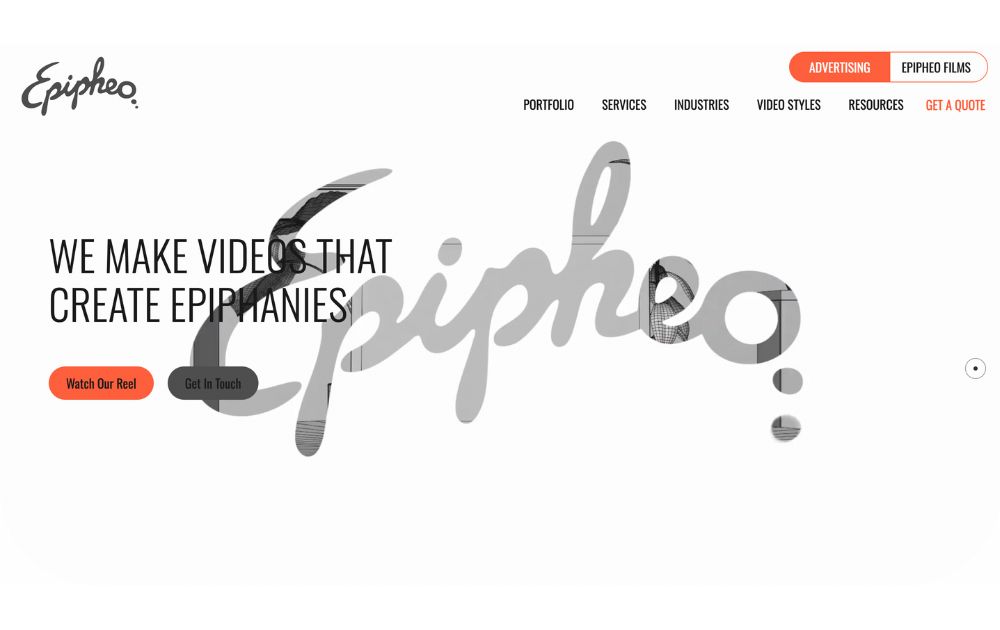
If you need help with educational videos, explore the services of Epipheo. Epipheo is a video marketing agency that creates animated explainer videos and other visual content to assist companies, organizations, and individuals in connecting with their audience effectively.
Key Services:
- Social video ads
- Storytelling testimonial videos
- Animated explainer videos
- Live action videos
- Strategy and consulting
7. Early Light Media
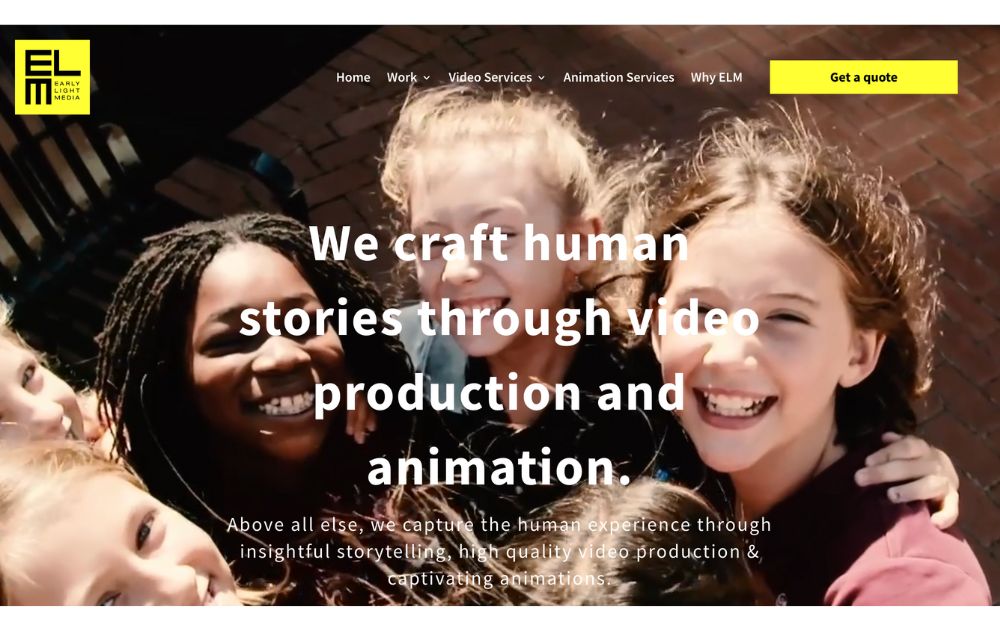
Early Light Video is a full-service video production company that creates high-quality video content for businesses, nonprofits, and individuals. The agency is known for delivering top-notch video content that meets its clients’ needs. It was founded in 2013 by a team of Emmy Award-winning creative directors, with offices in Baltimore and Washington, DC.
Key Services:
- Video production
- Post-production
- Animation
- Voice-over casting
- Music Licensing
8. Indigo Productions
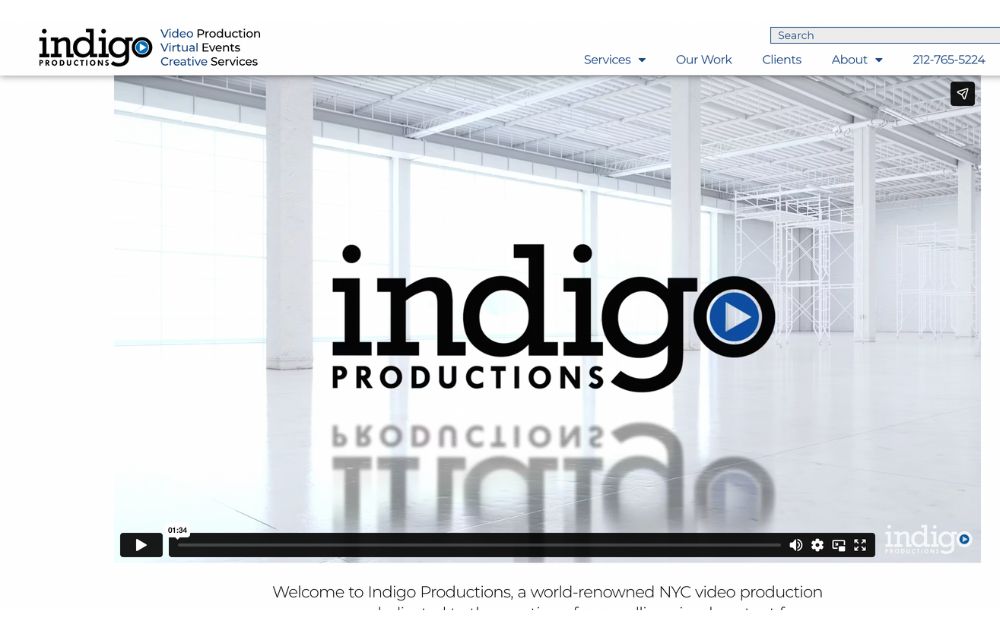
Indigo Productions is a full-service video production company based in New York City. They specialize in creating high-quality videos for corporate clients, advertising agencies, and individuals. Their team of scriptwriters, directors, producers, hair and make-up artists, and location scouts will handle all the logistics.
Key Services:
- Promo videos
- Web commercials
- Music videos
- Movie trailers
- Documentaries
9. LAI Video
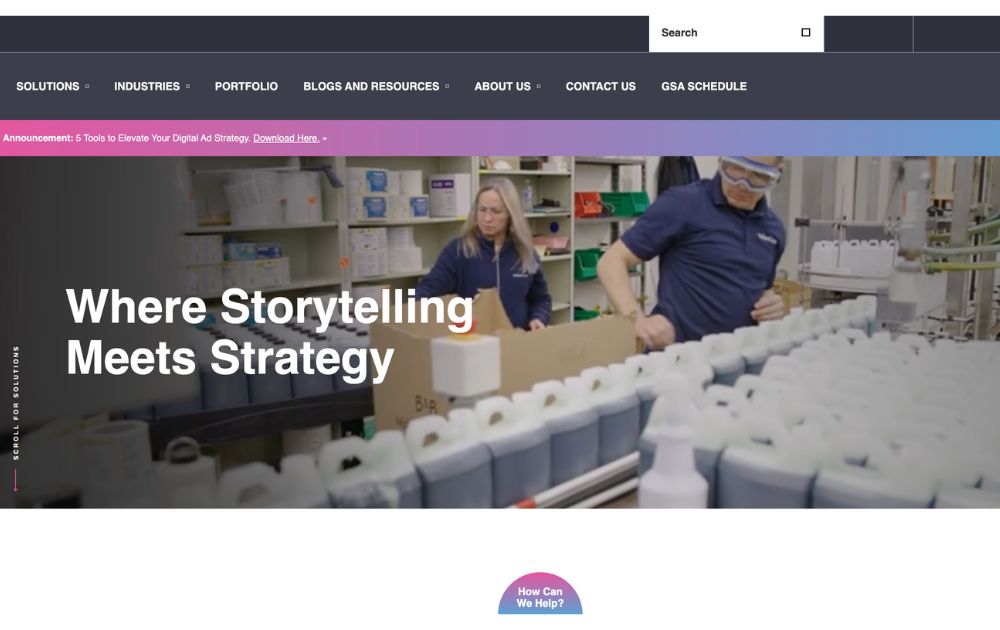
LAI Video is a Washington, DC-based boutique video production company specializing in creating visual stories that inspire and engage audiences. The company was established in 2013 and has become a leading video production agency in the DC metro area.
LAI Video has worked with various clients, including National Geographic, The World Bank, Georgetown University, and The Smithsonian Institution. Their skilled team of filmmakers, animators, editors, and producers works closely with clients to ensure that each video project meets their specific goals and objectives.
Key Services:
- Corporate videos and commercials
- Video communication campaigns
- Branding
- Video animation
- Marketing storytelling
10. SparkHouse
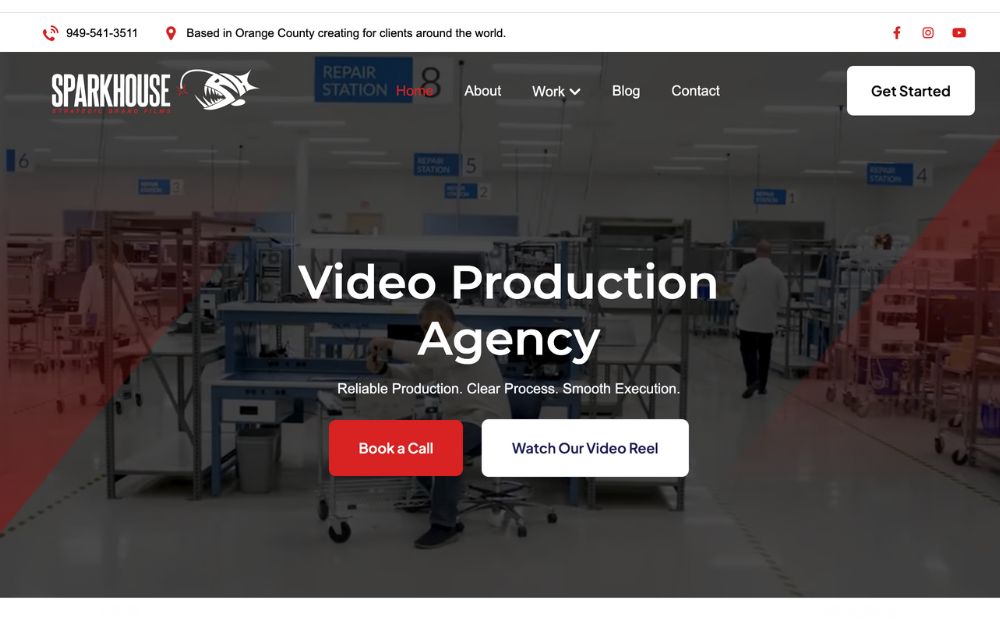
SparkHouse is a video production company based in Minneapolis, Minnesota, specializing in creating high-quality video content for businesses and organizations. The company was founded in 2013 by filmmakers and storytellers passionate about creating visually stunning and emotionally compelling videos.
SparkHouse has worked with various clients, including Target, 3M, Best Buy, and General Mills. Their talented filmmakers, animators, writers, and producers work closely with clients to ensure each video project is customized to their unique needs and objectives.
Key Services:
- Brand Videos
- Corporate Videos
- Animation
- Event Videos
- Social Media Videos
- Documentary Films
Which Types of Videos Do You Get from a Video Marketing Agency?
A video marketing agency typically provides various video types, each with a specific purpose and target audience. Below are the common types of videos you can request from a video marketing agency.
- Brand videos
- Explainer videos
- Corporate videos
- Testimonial videos
- Social media videos
- Live stream videos
- Case studies
- Reviews
- Tutorials
Conclusion
Video marketing is essential for businesses looking to engage their audience, build brand awareness, and drive conversions. That said, the competition will only continue to grow, making working with a reliable video marketing agency more critical than ever.
Featured Image Credit: Photo by fauxels from Pexels
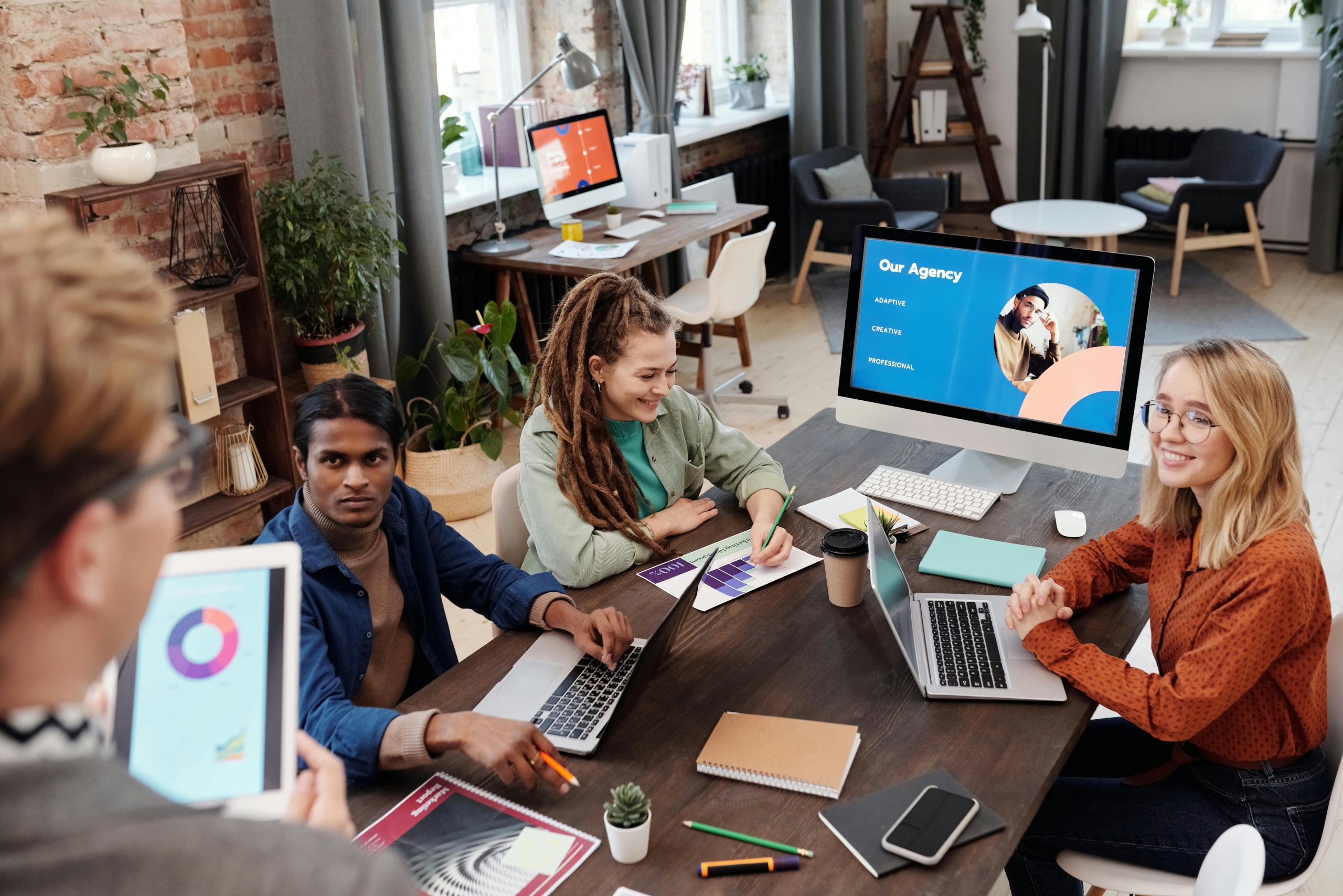
TLDR: Penji is unlimited graphic design for a flat fee; Colab is digital transformation focused on brand storytelling; Jacob Tyler is a full-service brand strategy powerhouse; Micro1 is AI-powered engineering and tech design.
Did you know that California’s creative economy is worth more than $500 billion to the state’s economy? That’s a lot of creative minds at work!
The search for the best design agency in Los Angeles can be quite daunting. After all, 1 in 6 people in L.A. work in a creative field. It’s no surprise there are thousands of candidates that would be an ideal extension of your dream team.
If your business requires a rebrand or continuous graphic design efforts you can rely upon day in and day out, then finding the right design agency will help your business thrive. You need more than just a creator, you need someone to bring your vision to life.
To ease your research, here are the top four contenders as the best graphic design agency in Los Angeles.
1. Penji

The future of design has arrived. Seeking a design service upon demand? Penji is your new graphic design service that acts as an extension of your team.
No hidden costs, no missed deadlines and For a monthly flat-fee subscription service, you will have access to the top 2% of designers in the world with little more than a submission request for us to take it from there!
This is perfect for marketers or agencies seeking cohesive quality over hiring needs.
Pros:
- Unlimited Revisions: We keep refining until you are 100% happy.
- Flat Monthly Rate: No surprise fees or hourly billing.
- Fast Turnaround: Most drafts are delivered within 24-48 hours.
- Vetted Talent: We hire the top 2% of designers, so you don’t have to vet freelancers.
Cons:
- Subscription-based: This model is best for those with ongoing design needs rather than one-off projects.
2. Colab

When it comes to a design as a service partner with digital transformation as its focus, Colab is the place to be.
A location-based agency that takes a data-led transformational, story-driven approach to seamless UX, Colab is where brands/agencies should go when seeking to merge strategy creation/implementation through execution from start to finish—especially with websites that merge look/functionality with success.
Pros:
- Strategic Focus: They rely heavily on data to drive design decisions.
- Local Expertise: A deep understanding of the LA market.
- Full-Service: They handle everything from the backend code to the frontend visuals.
Cons:
- Higher Cost: As a traditional agency, their project fees will be significantly higher than a subscription model.
- Timeline: Large-scale digital transformation projects can take months to complete.
3. Jacob Tyler
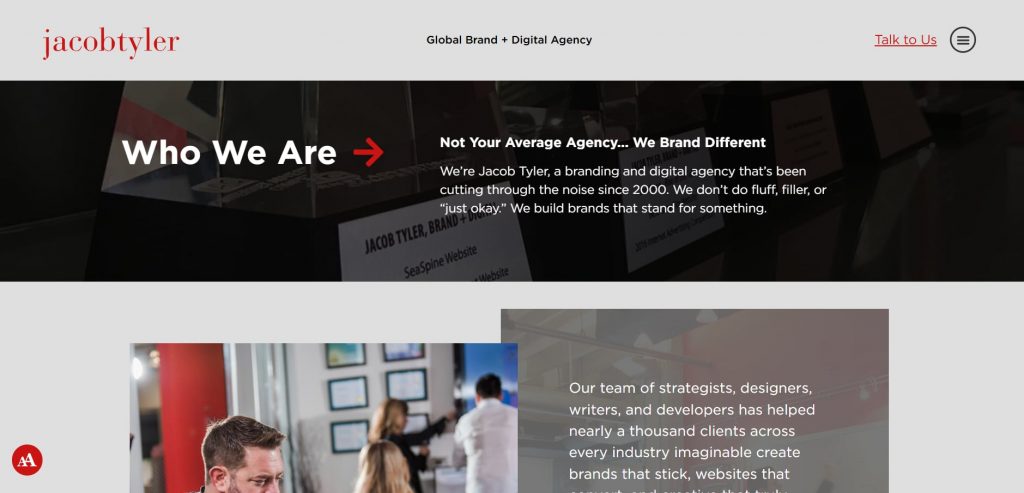
For nearly 20 years, Jacob Tyler has existed in the California Brand Design Agency game as a powerhouse. This full-service digital communications agency will trim the fat from your ultimate brand strategy to hone in on what you truly need moving forward.
If you’re looking for a major professional facelift with omni-channel marketing and integrated deep brand strategy, Jacob Tyler is a heavyweight brand—literally!—who’s worked with everyone from startups to credit unions!
Pros:
- Experience: Over 20 years of experience in the industry.
- Comprehensive: They can handle your entire marketing funnel, not just the design.
- Award-Winning: A strong portfolio of successful, high-profile campaigns.
Cons:
- Project Minimums: They typically work with project budgets starting at $10k+, which may price out smaller startups.
- Complexity: Their comprehensive approach might be overkill if you just need graphic design execution.
4. Micro1

Micro1 takes creative human design efforts and merges them with AI functionality. As a critical graphic design agency, they use artificial intelligence for beauty and brains on websites/apps like never seen before!
Micro1 builds engineering teams behind major apps (think Tinder, Uber…) so if you’re a tech-based startup in need of cutting edge product development based on extraordinary UX/UI look no further!
Pros:
- Tech-Forward: Ideal for SaaS and app-based companies.
- AI Integration: Uses AI to enhance efficiency and speed.
- Scalable: Great for ambitious startups looking to grow their engineering and design capabilities simultaneously.
Cons:
- Niche Focus: They are heavily focused on product and app development, rather than general marketing graphics.
- Development Heavy: If you don’t need coding or software engineering, their full suite of services might not apply to you.
Credit for Cover image: Photo by Mikael Blomkvist on Pexels

What’s the Best Design Agency in Austin for Businesses in 2026?

What’s the Best Design Agency in Jacksonville?
Die Logik hinter dem Zufall – Vulkan Vegas Casino analysiert
Wie Wildz Casino Zufall in messbare Chancen verwandelt
Play frank casino bonus code
Die Wissenschaft des klugen Spiels bei Wildz Casino
Richard casino sign up bonus

Top 10 Presentation Software To Use in 2026

Top 10 Video Marketing Agencies You Must Check Out in 2026

Top 10 Social Media Scheduler Apps to Automate Your Postings

How Marketing Optimization Tools Level Up Your Marketing Game

The Top 8 Webinar Platforms For Your Next Virtual Event or Demo

What’s the Best Unlimited Graphic Design Subscription Platform?

What’s the Best Graphic Design Service for Long-Term Projects
Trending
- Uncategorized3 days ago
Logik, Zahlen und Strategie: Das Fundament im Vox Casino
- Uncategorized3 days ago
Wild joker casino no deposit bonus codes
- Uncategorized2 days ago
King s casino live stream heute
- Uncategorized2 days ago
Richard casino sign up bonus
- Uncategorized3 days ago
Princeali casino
- Uncategorized3 days ago
Locowin casino
- Uncategorized2 days ago
Die Wissenschaft des klugen Spiels bei Wildz Casino
- Uncategorized3 days ago
Ritzo casino
- Uncategorized3 days ago
Verde casino registration bonus
- Uncategorized2 days ago
Xrp casino coin
